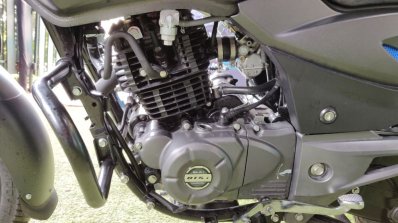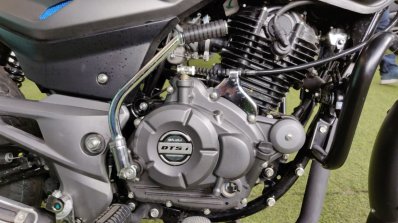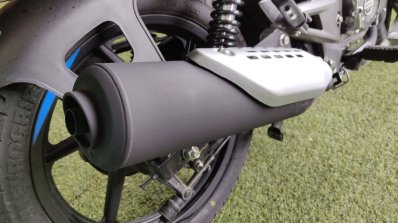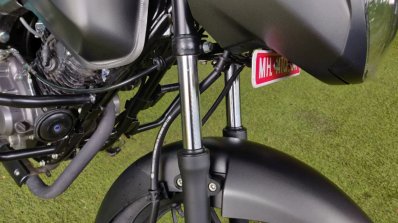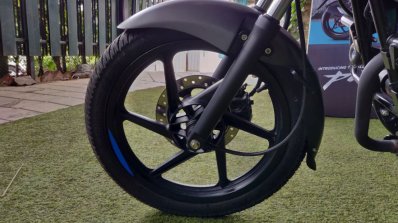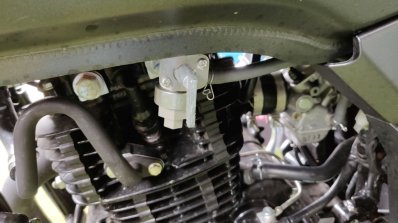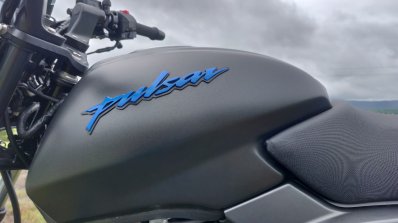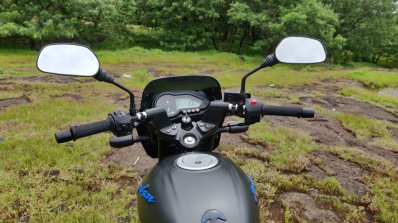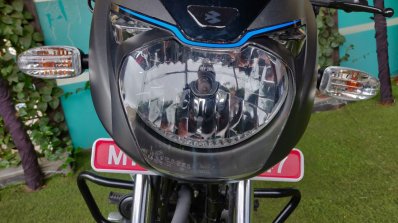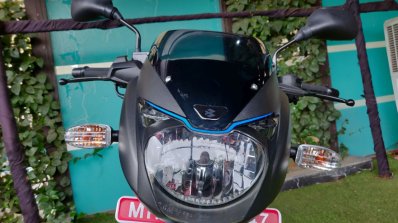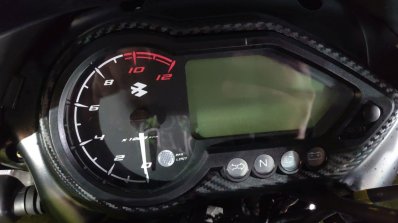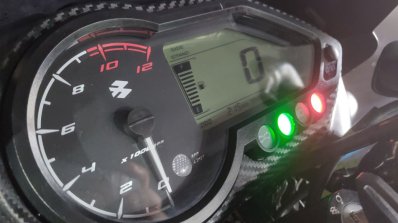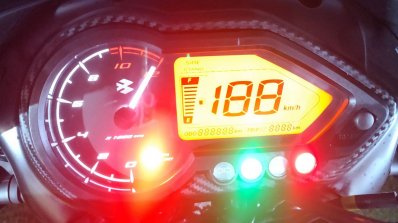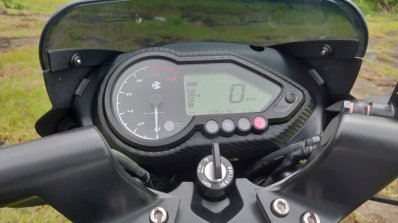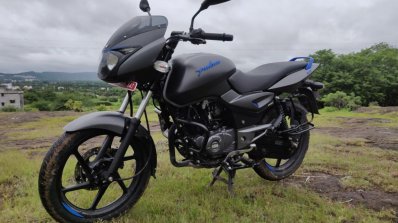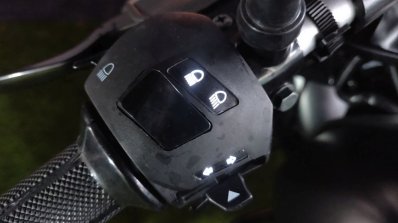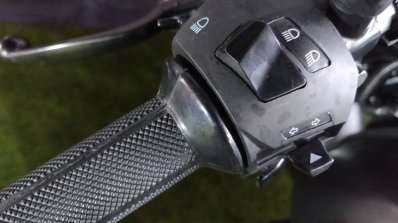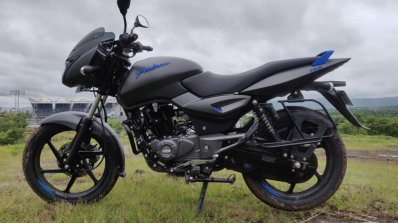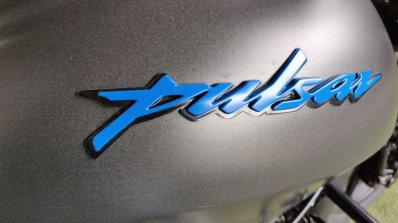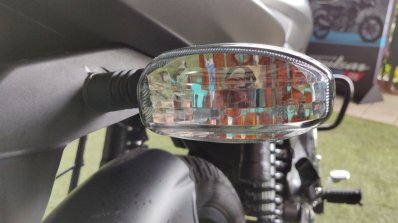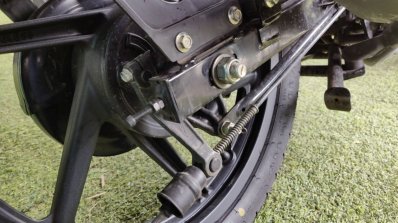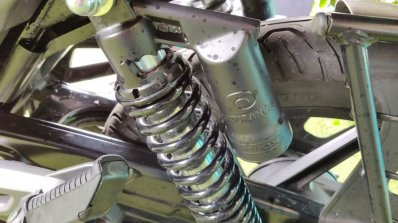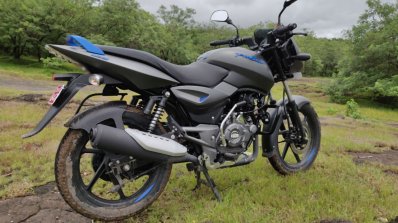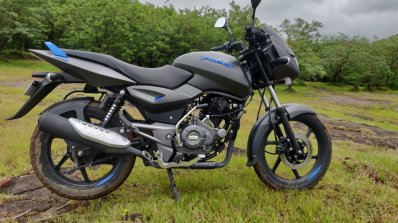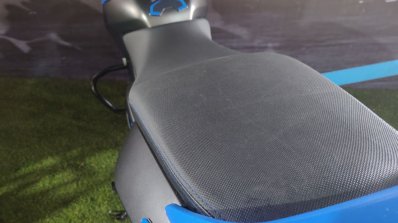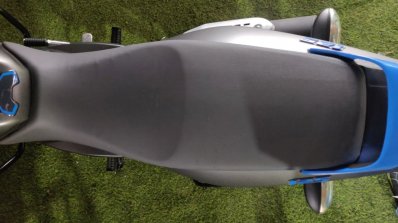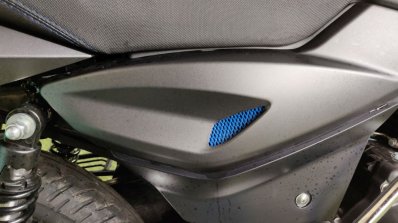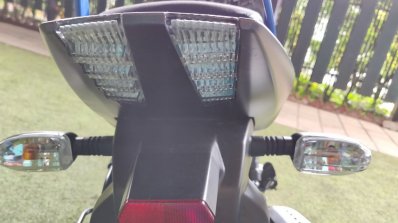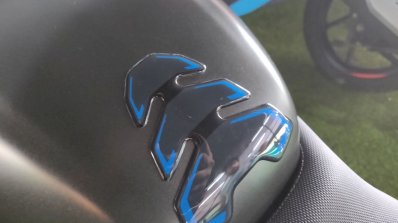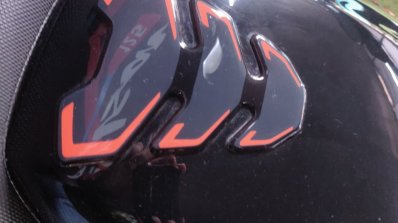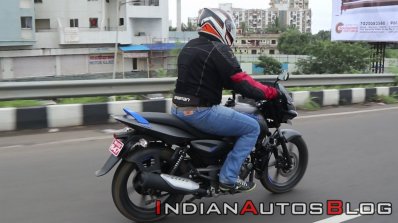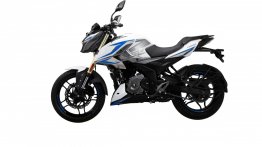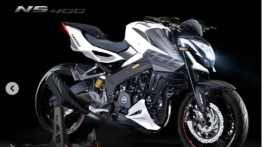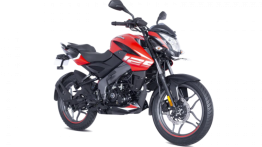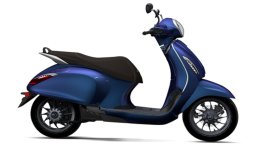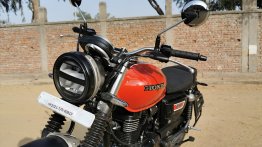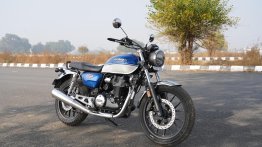Bajaj Auto has launched another pulsating star to light up its sales, and the latest product comes in the 125 cc segment. The Pune-based manufacturer has introduced the smallest displacement Pulsar-family vehicle in the Indian market, the Pulsar 125. The new bike retails at a competitive price tag. However, an aggressive ex-showroom tag does not mean that the Pulsar 125 skimps on features.
Also Read: KTM RC 125 ABS - First Ride Review
So, while Mumbai was drenched with heavy rains, we enjoyed the relatively beautiful weather of Pune along with the youngest member of the Pulsar family for a first ride experience, and to find out if it ticks all the right boxes.
Bajaj Pulsar 125 Styling
Barring from the 125 badge on the rear panel, and the model-specific paint theme, the new Bajaj Pulsar 125 looks exactly like the Pulsar 150 Neon. Thus, you would find a familiar front fascia that packs a halogen headlight along with twin pilot lamps, a body-coloured mask and a tinted fly-screen. The cockpit replicates the bigger Pulsar motorcycles. There's a semi-digital instrument console with a carbon-fibre textured surround, backlit switchgear and a clip-on style handlebar.
The semi-digital console features an analogue tachometer with an RPM limit indicator, while information such as the speedometer, odometer, two trip meters, fuel gauge and the side-stand warning is available on the digital display. A gear position indicator would have been a great addition to the package. The telltale indicators occupy the space under the digital display. The switchgear includes an engine kill switch and the starter button on the right side, while the left side packs control for high/low beam, pass, indicators and horn.

The fuel tank is of the same dimensions as on the Pulsar 150. However, the capacity is 11.5-litres (vs. 15-litres on the Pulsar 150) to keep the kerb weight low. The fuel tank also holds the 3D Pulsar logo and a tank pad – both featuring the unique bright colours. A similar shade is also visible on the side-panel grille, 125 logo on the rear, pillion grab rail, rim tapes and the saddle stitching.
The seat features a single-piece setup instead of a split-style layout. The pillion grab rail, too, features a single-piece design instead of the sportier split units on the Pulsar 150 Twin disc. The rear section features the Pulsar family-style twin-pod LED taillight, clear-lens blinkers and a number plate illuminator. The exhaust comes with a matte-finish heatshield.
The fit and finish look at par with the segment, and we faced no rattling sounds from any components during our brief ride experience. The Neon-style bright paint scheme should attract young buyers who are looking to buy a stylish 125 cc motorcycle.
Check out the similarities between the dimensions of the Pulsar 125 and the Pulsar 150 below:
| Model | Bajaj Pulsar 125 | Bajaj Pulsar 150 (Single Disc) |
| Wheelbase | 1,320 mm | 1,320 mm |
| Length | 2,055 mm | 2,055 mm |
| Width | 755 mm | 755 mm |
| Height | 1,060 mm | 1,060 mm |
| Ground Clearance | 165 mm | 165 mm |
| Seat Height | 790 mm | 785 mm |
| Kerb Weight | 140 kg | 144 kg |
| Fuel Tank Capacity | 11.5-litres | 15-litres |
The Pulsar 125 is indeed one of the most appealing 125 cc motorcycles in its price bracket. The bike is available in three colour options - Solar Red, Platinum Silver and the one we rode for the review - Neon Blue (with Matte Black body).
But how does it feel on the road, and do you feel the extra weight that it carries over its rivals?
Bajaj Pulsar 125 Engine Specifications and Performance
Bajaj has reduced the stroke on the 150 cc engine while retaining the bore size to bring down the displacement. The 124.4 cc single-cylinder, air-cooled, 2-valve motor pumps out a segment-leading 12 PS of peak power at 8,500 rpm and 11 Nm of maximum torque at 6,500 rpm. The powertrain complies with BS-IV norms and comes with a carburettor system. A counterbalancer aims to reduce engine vibrations.

The engine feels peppy with a good amount of low and mid-range power, which is perfect for city use. The motor feels quite comfortable in the lower revs although it starts to pull cleanly post the 4,000 rpm mark on the tachometer, with a noticeable gain post 6,000 revs. On the lower end, the Pulsar 125 pulls cleanly from 30 km/h mark in third gear, 40 km/h in the fourth cog and 50 km/h in the fifth. The third gear maxes out at 80 km/h while the fourth will display a ton per hour on the speedometer.
The refinement levels are pretty solid in the low range. However, there are noticeable vibrations from the footpegs and the handlebar as the tachometer starts to climb past 6,500 rpm. The 4,000 to 6,000 rev zone is a sweet-spot to cruise on the Pulsar 125.
The engine is linked to a five-speed transmission, and apart from one false neutral, the gear changes felt crisp and precise.
The kerb weight of the Pulsar 125 is nearly 15-17 kg higher than its rivals, which might be intimidating for new riders. However, the motorcycle hides the kerb weight efficiently once in motion. The ARAI certified fuel economy of the bike stands at 57.5 km/l and Bajaj states that riders can expect 50-52 km/l in real-life riding conditions. We could not test the actual number due to the lack of time.
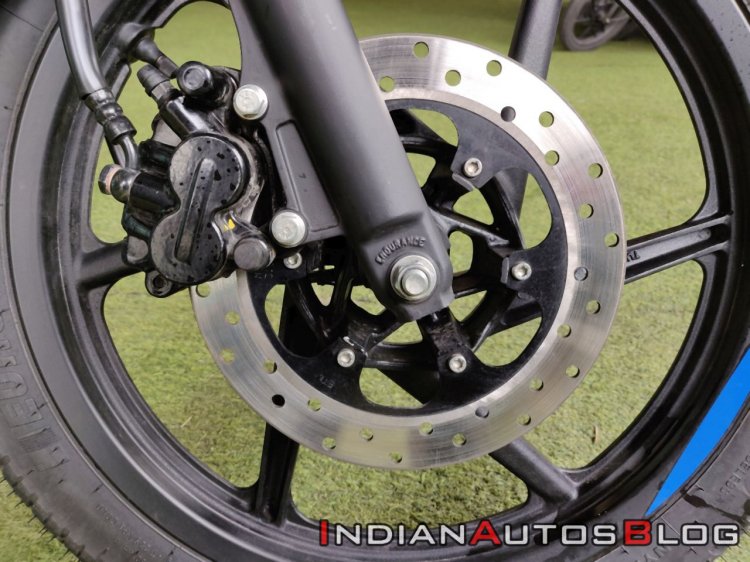
Anchoring department comprises a 170 mm drum brake at the front and a 130 mm unit at the back as standard, while a 240 mm disc is available as an option. Being a 125 cc motorcycle, the youngest Pulsar comes with the relatively budget combined braking system instead of the anti-lock braking tech. The mechanical combined braking system or CBS tech applies some pressure on the front brake when the rear brake is applied. We tested the disc brake version of the Pulsar 125 and were quite content with the performance of the braking setup.
Check out the performance numbers of the Pulsar 125 against the Pulsar 150 and other 125 cc products in the table below:
| Model | Bajaj Pulsar 125 | Bajaj Pulsar 150 | Hero Glamour | Honda CB Shine |
| Displacement | 124.4 cc | 149.5 cc | 124.7 cc | 124.7 cc |
| Bore x Stroke | 56.0 x 50.5 mm | 56.0 x 60.7 mm | 52.4 x 57.8 mm | 52.4 x 57.8 mm |
| Power | 12 PS at 8,500 rpm | 14 PS at 8,000 rpm | 11.6 PS at 7,500 rpm | 10.3 PS at 7,500 rpm |
| Torque | 11 Nm at 6,500 rpm | 13.4 Nm at 6,000 rpm | 11 Nm at 6,500 rpm | 10.3 Nm at 5,500 rpm |
| Transmission | 5-speed | 5-speed | 4-speed | 5-speed |
Bajaj Pulsar 125 Ride Quality
Despite the use of clip-on style handlebars, the rider’s triangle feels comfortable. The clip-on bars are tall and wide, thus delivering relaxed and upright ergonomics that are perfect for city riding. The footpegs aren’t too rear set either, and we did not suffer from any discomfort during the couple of hours that we spent on the saddle. The plush seat further enhances comfort. The NVH levels are commendable in the low and mid-range, and we did not hear any rattling sound during our first ride experience. However, as mentioned above, vibrations from footpegs and the handlebar are evident post the 6,500 engine rev mark.
The Pulsar 150 sourced 31 mm telescopic front forks and five-step preload-adjustable twin gas shocks perform the suspension tasks. The setup feels firm but not too stiff, and the Pulsar 125 filters out most of the undulations over the roads efficiently.
Bajaj Pulsar 125 Verdict
The Pulsar 125 makes a strong case for itself and it is indeed an appealing package in the 125 cc space. The Pulsar 150-inspired styling, the bright paint options, peppy motor and features such as semi-digital instrument console, backlit switchgear and LED taillight to make it desirable. Despite the feature list, the Pulsar 125 retails at a competitive price tag of INR 64,000* for the drum brake version and 66,618* for the disc brake version.
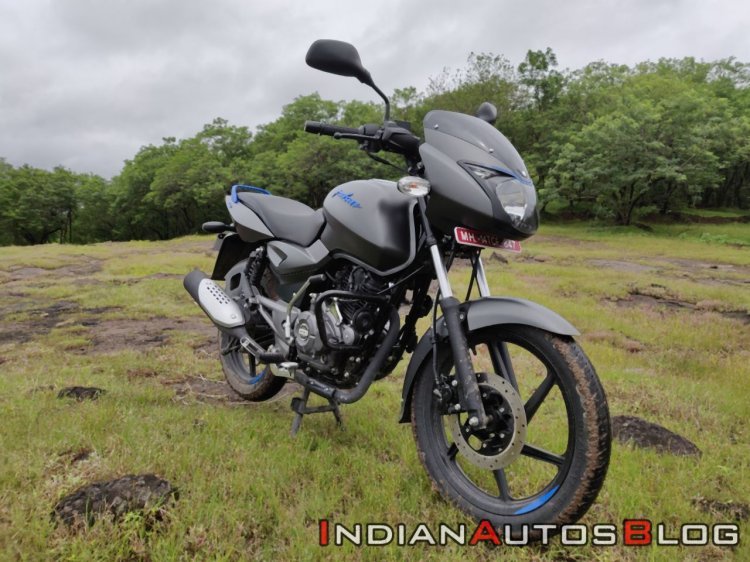
Also Read: Bajaj Pulsar 125 Neon vs. Hero Glamour vs. Honda CB Shine SP - Spec Comparison
On the downside, the heavier kerb weight may intimidate new riders but it should not take very long to get accustomed to the bike. Moreover, we would have liked to see a gear-position indicator on the instrument console - a feature that offered even on the Bajaj Platina 110 H Gear.
So if you’re looking for a stylish 125 cc motorcycle at a budget, make sure to check out the Pulsar 125. Check out the price comparison of the Pulsar 125 against its rivals in the table below. (Pulsar 150 included for reference):
| Model | Bajaj Pulsar 125 | Bajaj Pulsar 150 | Hero Glamour | Honda CB Shine |
| Ex-showroom Delhi price | Drum: INR 64,000
Disc: INR 66,618 |
Neon: INR 71,000
Classic: INR 84,960 Twin Disc: INR 88,838 |
Drum: INR 62,250
Disc: INR 65,750 Fi: INR 69,950 |
Drum: 65,020
Disc: 68,938 |
Meanwhile, a premium version of the Pulsar 125 has started to reach the dealership. The more stylish version of the 125 cc motorcycle comes with bigger Pulsar range-inspired graphics, fuel tank shrouds, split seat setup, sporty pillion grab rails and an engine cowl. However, we are yet to hear the price for the premium version of the Pulsar 125.
*Ex-showroom Delhi







